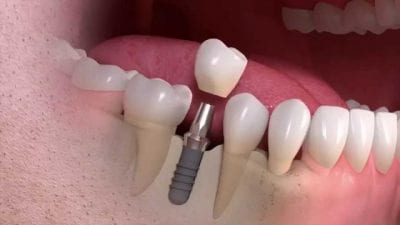Implant dentistry has revolutionized the way we approach tooth replacement, offering patients a durable and aesthetically pleasing solution to missing teeth. Unlike traditional dentures or bridges, dental implants provide a stable foundation that mimics the natural tooth structure, allowing for improved functionality and comfort. This innovative treatment not only enhances one’s smile but also contributes to overall oral health by preserving jawbone integrity and maintaining facial structure.
As advancements in technology and techniques continue to evolve, implant dentistry has become increasingly accessible and popular among patients of all ages. With high success rates and minimal recovery times, more individuals are opting for implants as a long-term solution to tooth loss. In this article, we will explore the various types of dental implants, the procedure involved, and the benefits they offer, shedding light on why they have become a preferred choice in modern dental care.
Types of Dental Implants
Dental implants primarily fall into two categories: endosteal and subperiosteal. Endosteal implants are the most common type, consisting of small titanium screws that are surgically placed directly into the jawbone. These implants serve as artificial tooth roots and can support one or more prosthetic teeth. On the other hand, subperiosteal implants are positioned under the gum but above the jawbone, making them suitable for patients who may not have adequate bone height for endosteal implants. Both types can effectively restore functionality and aesthetics, catering to different patient needs and anatomical conditions, like those who may be seeking an Implant in San Antonio, TX.
The Implant Procedure
The dental implant procedure typically involves several steps, beginning with a thorough evaluation and treatment planning by a dental professional. This is followed by a surgical phase where the implant is placed in the jawbone. After a healing period, during which the implant integrates with the bone, an abutment is attached, providing a connection for the final restoration. The last step is the placement of the crown, which is custom-made to match the existing teeth. This meticulous approach ensures a seamless result that not only enhances the patient’s smile but also promotes long-term oral health. With proper care, dental implants can last for many years, making them a worthwhile investment for those seeking a reliable solution for tooth loss.
In conclusion, implant dentistry stands as a transformative approach to addressing tooth loss, combining advanced technology with a focus on patient comfort and satisfaction. The longevity and effectiveness of dental implants make them an appealing choice for individuals seeking a natural-looking and functional solution. With various options available to accommodate diverse needs and an increasingly streamlined procedural process, implant dentistry is not only restoring smiles but is also enhancing the quality of life for countless patients. As awareness and understanding of this treatment continue to grow, it holds the promise of improving oral health and driving innovation in the field of restorative dentistry well into the future.




